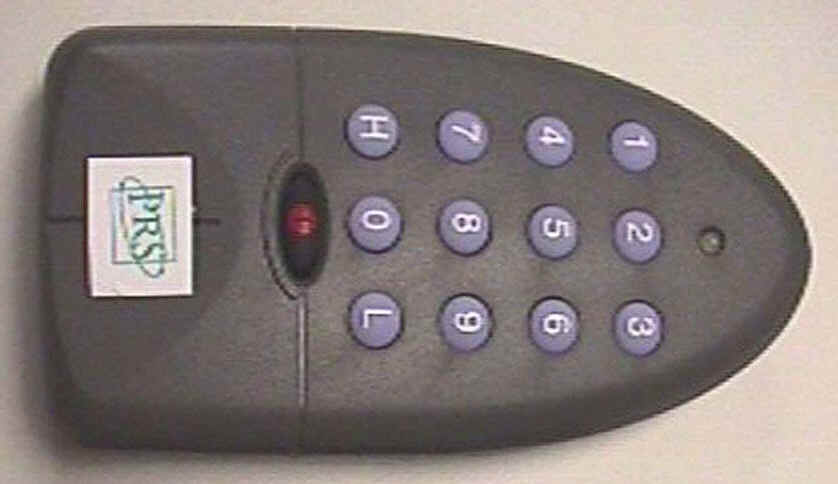
Educational
Technologies
Group

In a nutshell, each member of the audience responds privately to a question or prompt, all responses are collected, and the summarized results displayed as a histogram for all to see.
Since nearly all questions or selections can be cast in a multiple-choice format, members of the audience answer by pressing down on a single-digit button on their pocket-size wireless Transmitter (T). The signals sent are intercepted by the portable Receiver (R) which in turn is connected to a central Display (D) via an electronic circuit or a PC. Every time a signal from a T is received, one of the boxes shown on D changes color. Since each T is encoded with a sender (student) ID number which is tagged onto the signal sent, the flashing box on D shows the ID of the corresponding sender. The answer itself
is not displayed. At the end of the question period, a statistical summary of the answers received can be shown on D as a histogram either automatically or with a key stroke. There is also the option of attaching a confidence level (high, medium, or low) to the answer sent.
There are two modes of operation for PRS which the operator (instructor) can select prior to the start of each session.
|
In the Anonymous mode, no record is kept on the individual responses. | |
| In the Known mode, each ID-tagged response is recorded on a data file in the sequence received. The cycle is repeated for each question until the end of the session, at which time an end-of-file is marked on the data file, and the entire file is written onto a memory unit or a PC hard disk for future retrieval. |
